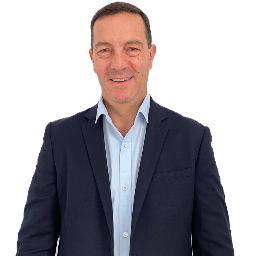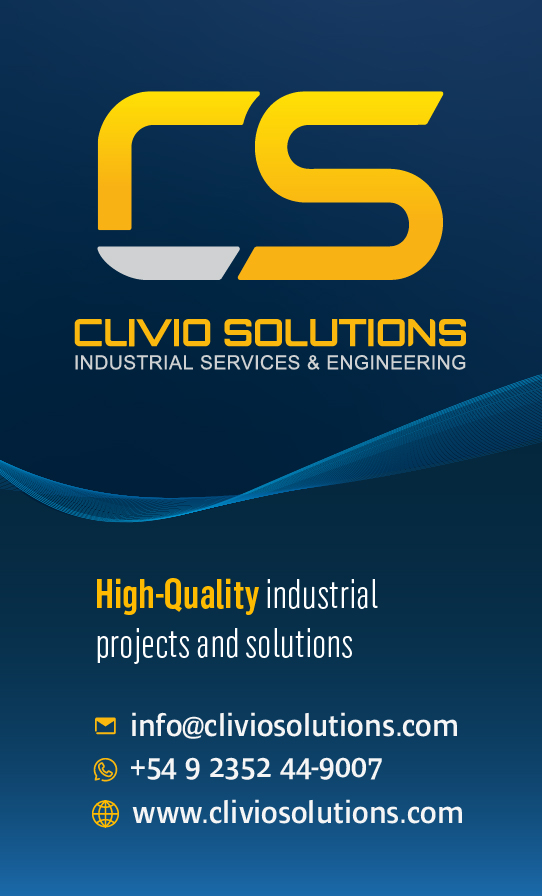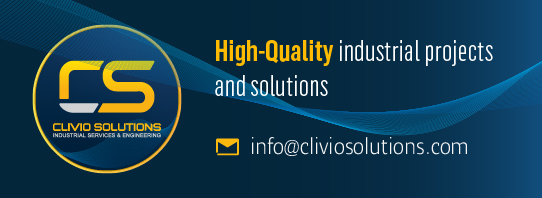
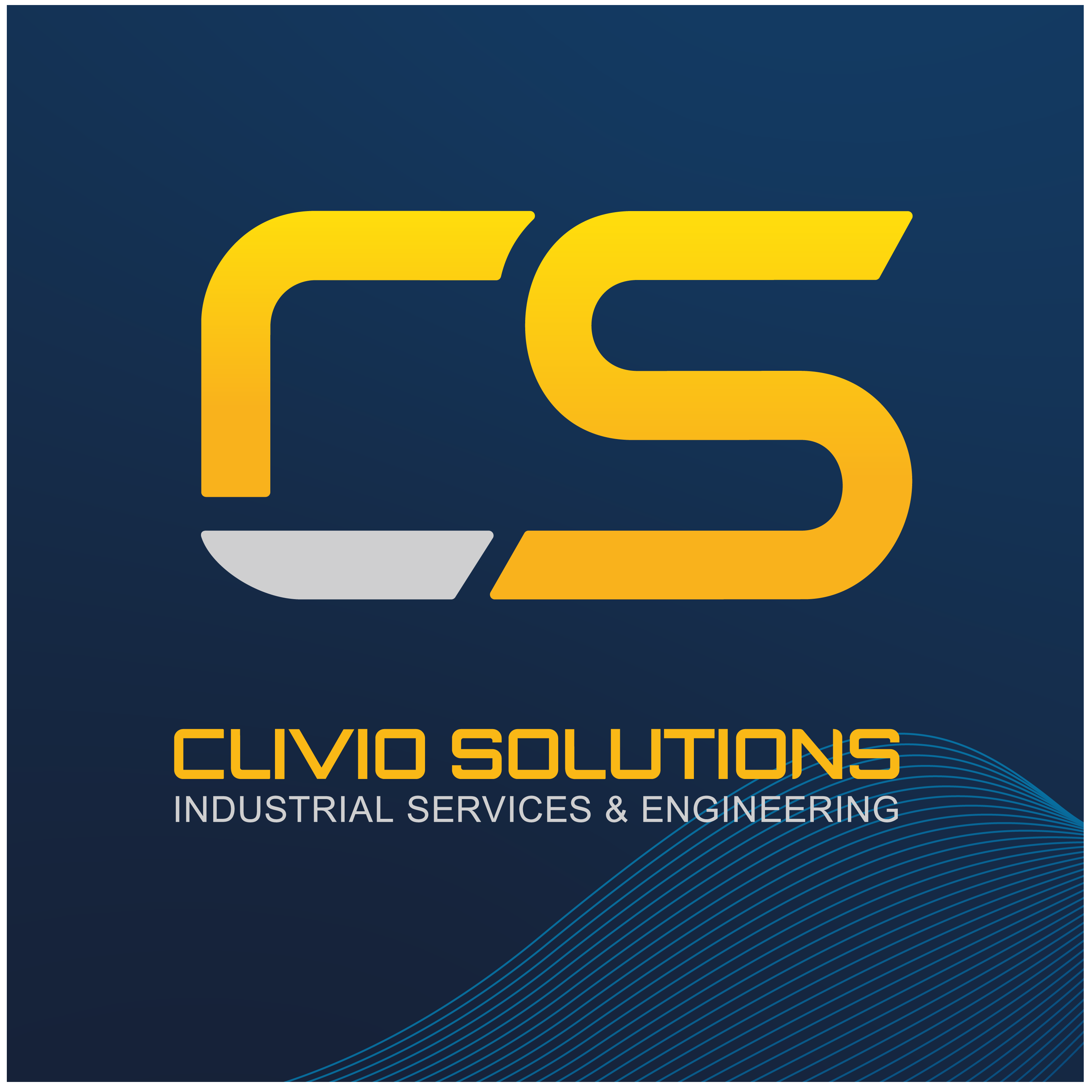
Clivio Solutions
https://www.cliviosolutions.com
Clivio Solutions
About the company
At Clivio Solutions, we offer engineering services and high-level consulting, specializing in balanced food. Our experience enforces with prestigious associations, ensuring security, cutting-edge technology, and intelligent and sustainable solutions.
Our value proposition is based on integrity, a wide range of solutions, and a broad geographic breadth. We stand out for encouraging synergy being dedicated facilitators who offer continuous support characterized by unequaled reliability and quality.
Company News
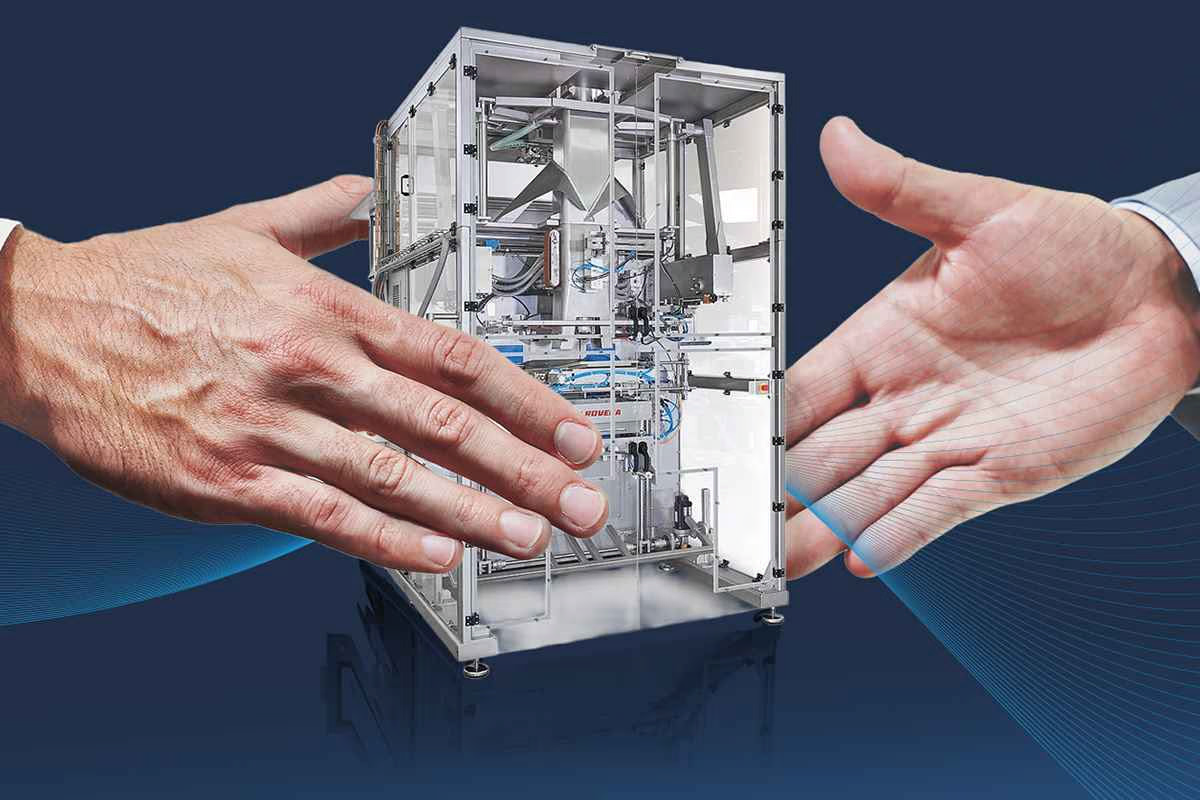 Packaging
Packaging
3+ MIN
08/07/2025
Sustainable Packaging: Innovation and Collaboration for a Greener Future
At Clivio Solutions, we believe in the importance of synergy between technology and materials to drive positive change in the industry. This is why we organized a coworking space with our partner, Rovema, and one of the world's leading chemical companies. During this meeting, we spoke with Guillermo Navarro, Sales Director for LATAM at Rovema, about how this alliance is driving the evolution of sustainable packaging.
Innovation in Materials and Technology: A Shared Challenge
Our first question to Guillermo was about the link between Rovema and the company, how the collaboration started, and the key aspects of this joint work:
"They contacted us because they had been working with their converters to develop a more recyclable solution (resin and film) for flexible packaging (bags), which is used in vertical form fill seal (VFFS) machines. The problem arose when they brought the solution and did not work on the customer's machine. Recyclable films have a smaller difference in the fusion points of the layers, which is why they require much more precise technologies to function properly. That's when they suggested including Rovema machines to offer customers a complete solution that includes the film, but also the machine that can process it."
Sustainability and Efficiency: Balancing the Variables
Sustainability in packaging is not just about recyclable materials but also about overall optimization. Guillermo explained how this alliance helps minimize environmental impact without compromising the final product quality:
"Many clients already have goals to reduce plastic in their packaging and make them more recyclable. This presents significant challenges because, like almost everything in the industry, when you move one variable, others are affected; everything is interconnected. By using recyclable film, you might sacrifice the film's protective barrier, mechanical strength, packaging speed, or seal integrity, to name just a few variables. With this alliance, we can work in a multidisciplinary way to maximize all variables to an acceptable point in the market, while also helping our clients achieve their sustainability goals."
Impact on the Pet Food Industry and the End Consumer
The pet food sector has specific packaging requirements, making it even more important to understand the impact of this collaboration on both manufacturers and the end consumer:
"Pet food requires a high barrier in the film (due to fat content), a reliable seal to prevent contamination, strong packaging (due to the weights handled), and excellent product presentation. With this collaboration, we aim to provide customers with all these characteristics, but in easily recyclable packaging."
Conclusion
Sustainability in the packaging industry depends not only on material innovation but also on technological evolution that allows for its proper application. The collaboration between Rovema and one of the world's leading chemical companies represents a major step toward integrating solutions that reduce environmental impact without compromising quality or production efficiency.
At Clivio Solutions, we continue to invest in developing strategic alliances that promote a more sustainable future for the industry. The evolution of sustainable packaging is a shared challenge, and we are committed to being an active part of this change.
Is sustainability a challenge at your plant? Contact us, and let's take the first step together.
By Clivio Solutions
Source: All Pet Food Magazine
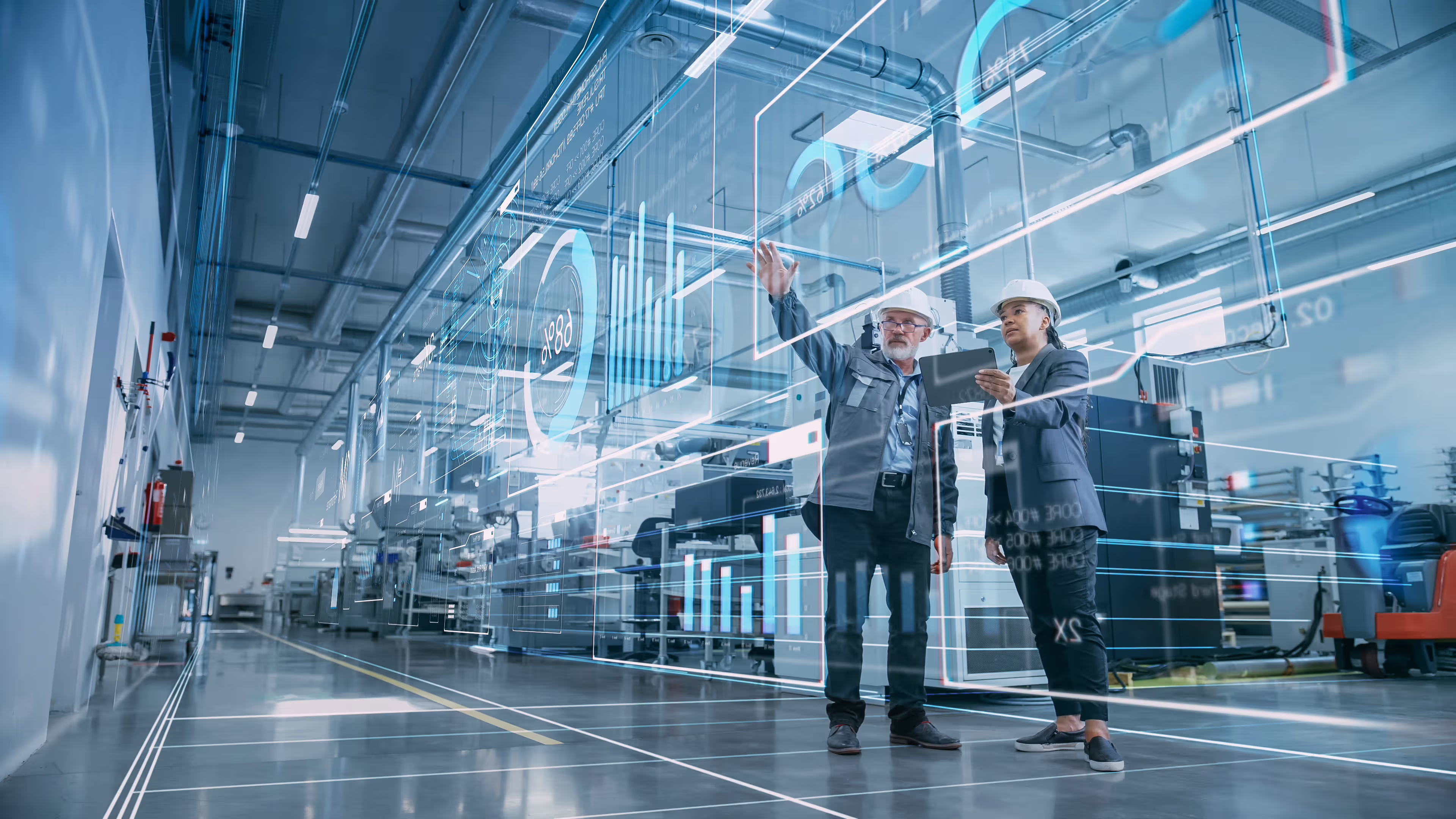 Automation
Automation
2+ MIN
17/12/2024
The Evolution of the Pet Food Industry: Modernization and Automation of Plants
What seemed like science fiction just a few years ago is now a reality. But how is it possible that so few people can manage an entire shift of pet food production, with all the challenges that come with it? What does it really mean to have a modern and smart plant? And more importantly, how can a plant be designed to maximize efficiency, safety, and product quality?
Here are some key insights to help understand this new paradigm:
Automation of the Dosing Process: The implementation of automatic dosing systems has significantly reduced human error. This ensures that each formula contains the exact amount of ingredients, preventing health issues in pets and economic losses for brands. Precision is critical, as any over-/under-dosing can have undesirable consequences.
Sustainability: Modern plants are designed with sustainability in mind. They use renewable energy sources such as solar panels, efficiently manage water usage and waste, and employ recyclable or biodegradable packaging materials. Reducing energy consumption is another key aspect; energy-efficient technologies, like low-consumption transport systems, help make plants greener. Moreover, in terms of social sustainability, odor control to avoid disturbances to neighbours is a standard that must be met.
End-of-Line Automation: The latest generation of highly automated and flexible packaging and palletizing machines adapt to different packaging formats and production volumes. This allows plants to quickly respond to changing market demands without sacrificing efficiency. Automated inspection and quality control systems ensure that every product meets quality standards before being packed, minimizing the risk of product recalls and protecting the brand's image.
Real-Time Quality Control: Smart plants feature advanced systems that monitor each stage of production in real-time, from start to final product disposition. These systems verify parameters, such as moisture, water activity, density, and temperature, ensuring they remain within optimal safety and hygiene ranges.
Artificial Intelligence and Data Analytics: AI helps predict demand, manage inventories, and optimize the supply of raw materials, reducing waste and costs. With this technology, plants can quickly adapt to market needs, optimizing their performance.
At Clivio Solutions, we offer comprehensive consulting for the design of modern, efficient, and sustainable plants. Our personalized approach is based on understanding each client's operational needs and strategic goals. From process optimization to the selection and integration of cutting-edge technologies, we help ensure that each plant is ready to maximize its performance while minimizing its environmental impact.
Finally, by focusing on operational efficiency and a flexible, scalable design, we ensure that facilities can quickly adapt to changes in demand or technologies, avoiding high investment costs in the future.
Are you ready to take your plant to the next level? Contact us today and discover how we can help you design a smart, modern, and sustainable plant that meets your needs and goals. Together, we can make the future of pet food production a reality.
By: Clivio Solutions
Source: All Pet Food Magazine
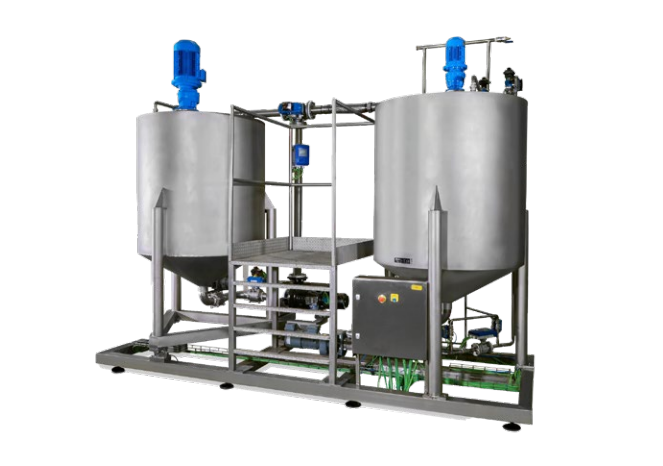 Extrusion
Extrusion
2+ MIN
11/09/2024
Recovery of by-products in the manufacture of pet food
Challenges with wet by-products
Wet by-products have a high moisture content, making them difficult to handle due to their rapid decomposition and the generation of unwanted microorganisms that can put pet health at risk. Generally, these by-products are marketed at low value for feed farm animals or are discarded.
Problems with process fines
Fines are often reinserted inefficiently into the grinding or mixing process, leading to several problems:
Grind a product that has already been ground
Consume additional energy in grinding
Wear on hammers and mill sieves
Affect the capacity of the equipment that reprocesses these by-products
Sustainable solution: By-product Recovery System (SRS)
The By-product Recovery System (SRS) is a proven solution to reduce, reuse and recycle both wet and dry by-products, regardless of size, temperature and moisture content.
SRS components
The SRS has two tanks:
Homogenization tank: receives the by-products to be recovered. It has a specially designed blade that rotates at high speed to achieve a homogeneous mixture (slurry) with an approximate concentration of 20% by-products and 80% water at a temperature between 40 and 50 °C.
Maintenance tank: once the homogeneous mixture is achieved, it is transferred to this tank through pipes. Here, a mixer keeps the slurry homogeneous and at the proper viscosity.
The SRS control system communicates with the preconditioner-extruder PLC to ensure the correct water content within the preconditioner and extruder, avoiding unwanted variations in moisture content and guaranteeing optimal quality and uniformity of the final product.
Advantages of SRS
Recovery of investment in a short time
Immediate use of all by-products, avoiding the generation of unwanted microorganisms
Optimization of process times
Decrease in labour requirements
Improved traceability
Achievement of automation
Compliance with FDA and EHEDG certifications
Made of stainless steel
Adaptable to plant spaces through horizontal or vertical layout
SRS sizing
To size the appropriate SRS for your process, it is necessary to determine the number of by-products generated. With this information, the appropriate model can be selected. There are three standard models: SRS150, SRS300 and SRS600, which recover 150, 300 and 600 kg/h respectively. Special solutions can also be designed according to specific needs.
By: Clivio Solutions
Source: All Pet Food Magazine
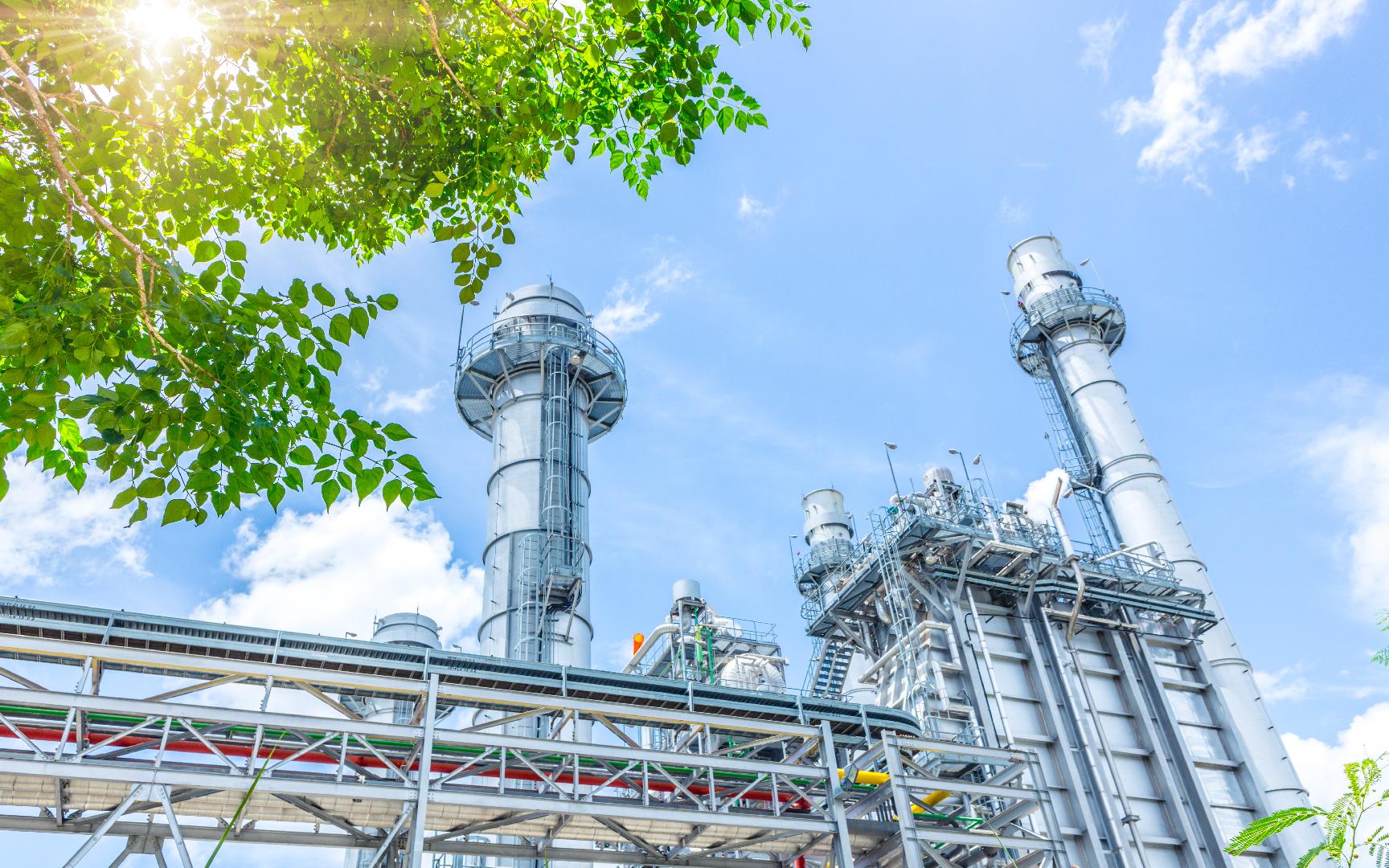 Manufacturing Process
Manufacturing Process
4+ MIN
23/02/2024
Odor control technologies comparison
Biofilter Technology
Process air, which contains an annoying odor, is treated using a filter material, normally woodchips, and eliminated by microorganisms located therein, and can reduce various compounds such as sulfides, ammonia, and amines when present in low concentrations. Then, the clean air is released into the atmosphere, leaving the residual drainage (nitrates and sulfides) as a contaminant that must necessarily be treated, because, otherwise, they continue to cause negative odors.
This system can treat flows of 1,000 to 50,000 m3/h, and requires water for its operation and a large area for its implementation, using little electrical energy. To avoid damaging the filter material, periodic maintenance should be considered. When it comes to processing air with a high dust content, it is mandatory and necessary to treat it, for example, using a gas scrubber.
It is considered a good technology due to its cost/efficiency ratio, obtaining results with up to 85% of odors eliminated. Regarding investment costs, and even though they may vary by brand, manufacturer, or model, those generally range between USD 700,000 and USD 1,000,000.
Ozone and UV Light Treatment Technology
Airflow, which must be less than 20,000 m3/h, first passes through the UV lights, where the ammonia, sulfides, and amines are decomposed, and then the remaining compounds are broken down with catalysts by injecting ozone (O3).
Removing dust from the air during the process is crucial as it will damage the effectiveness of the UV light. That is, highly contaminated air can considerably affect the efficiency of the system due to the flow density.
On the other hand, it uses electrical energy for its operation, and the air must either not exceed 60°C or the humidity be greater than 85%. This treatment allows good results, reaching levels of 70 to 90%. In this case, investment costs are considered between USD 200,000 and USD 400,000, with high annual operating costs.
Non-thermal Plasma (NTP) Technology
Technology capable of treating flows ranging from 5,000 m3/h to 250,000 m3/h depends on the system: in the case of direct NTP, normally 20,000 m3/h can be treated, but it could be up to 250,000 m3/h with indirect NTP. These devices use ambient air to generate free or active oxygen (O1), which has a high oxidation power with the molecules that contain the annoying odor. To obtain them, the air must pass through a stage of filters to rid them of impurities and then go through the cabinet with non-thermal plasma modules, where the dissociation of the molecules is achieved, and the aforementioned oxygen radicals are obtained. These are injected into the outlet duct where the annoying odors come from, and in just 1 second, the odor molecules react and oxidize, becoming imperceptible to our noses.
Unlike other technologies, non-thermal plasma does not use water or chemicals for its operation, so it does not generate a secondary contaminated by-product. It only requires a minimum of electrical energy. In addition to the large flow rates it can manage, there is no restriction on the humidity or temperature that the process air can have.
Optimal results are achieved, reaching up to 95% of odors eliminated.
These systems easily adapt to existing installations, thanks to their flexibility and the little space they take up. Regarding investment levels, these range from EUR 120,000 to EUR 250,000.
Scrubber technology
The air coming from the process, which contains the annoying odor, comes into contact with the stream of water and drip-type chemicals. This way, the odors react or are dissolved into the liquid and the air is released into the atmosphere clean.
Scrubbers, also known as gas scrubbers, can treat air flows that contain dust without using filters. They can treat flows ranging from 1,000 to 60,000 m3/h, achieving good results from 50% to 70% of controlled odors.
A great disadvantage of this system is that strict control of the contaminated water generated after the process is required, and it also occupies a large area for its installation.
The investment can reach up to USD 500,000 with high operating costs of up to USD 150,000 per year.
Conclusion
As a summary, see a comparative table of the technologies presented with their advantages and disadvantages, considering the following as a score: 5 highly positive, 4 positive, 3 medium, 2 negative, and 1 highly negative.
The choice and installation of the appropriate system will depend, on the one hand, on the industrial process that needs to be treated, considering the components of the contaminated air, and, on the other hand, on the levels of odor control that must be achieved to comply with current regulations in each country.
By: Clivio Solutions.
Source: All Pet Food Magazine.
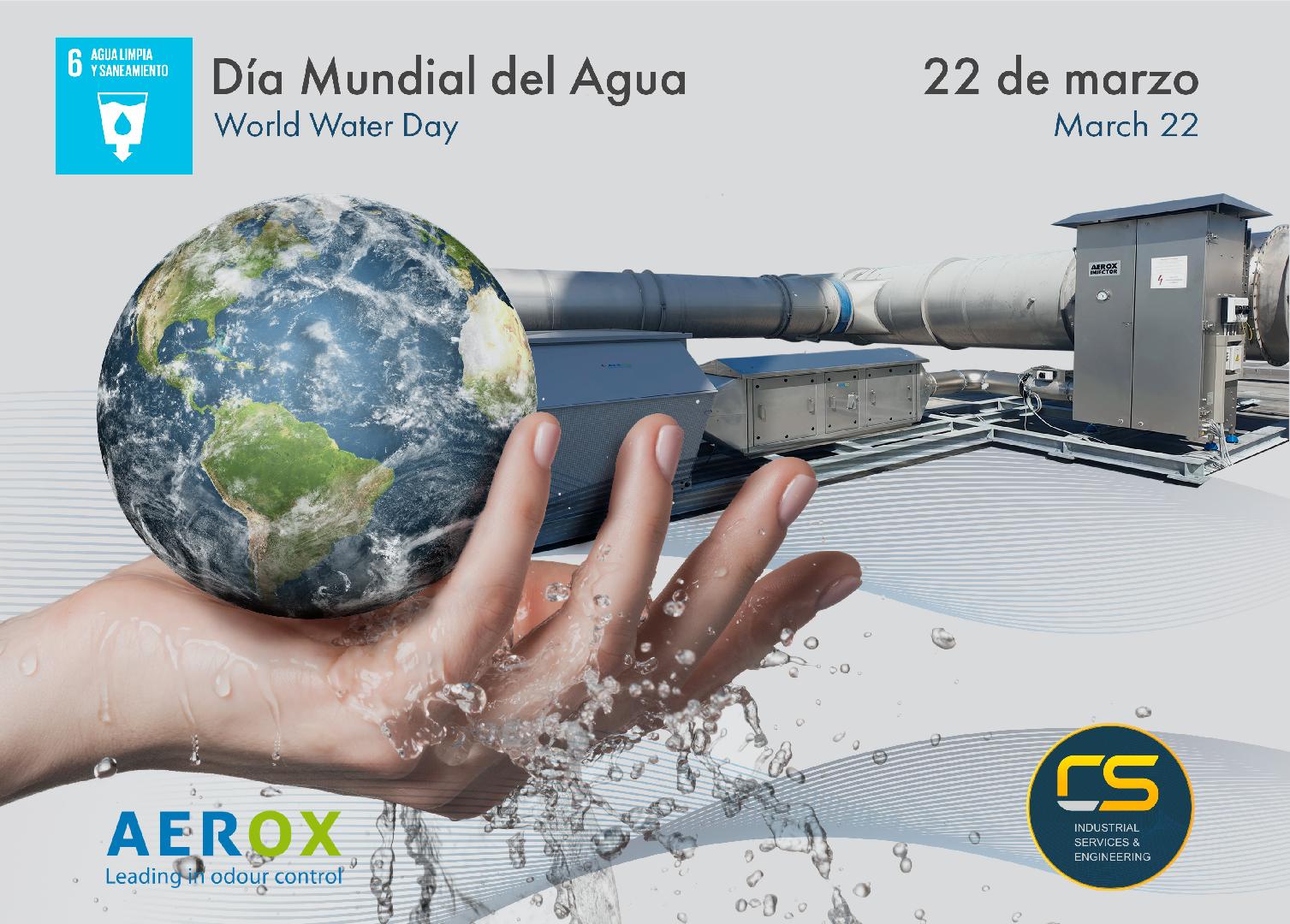 Trends
Trends
3+ MIN
22/03/2023
World Water Day
This day is celebrated under the motto 'Groundwater: Making the invisible resource visible', by the UNESCO, the leader agency of the ONU. In 2015, the world committed to 6. ° Sustainable Development Goal (SDG) as part of the 2030 Agenda: the promise that everyone would have safely managed water and sanitation. This year the celebration of this world day coincides with the start of the ONU Water Conference 2023 (March 22-24, New York). This will be a unique opportunity to seek solutions to the current crisis. Billions of people and countless schools, businesses, health centres, farms and factories are restricted because their human rights to access water and sanitation have not yet been fulfilled. Today, we are very far from achieving it. For this reason, from the pet food industry we understand the seriousness of the problem and we assume the responsibility of taking care of this non-renewable natural good, as a form of constant valuation of a resource that allows us to produce food, improve the quality of life of pets and thus see a booming industry grow. We are aware that we have at our fingertips a resource that even today is not available to the entire world population. And we are also convinced that there are rapid and transformative measures, among which the individual action of each one of us can be included. That is why today, we tell you about the interesting Non-Thermal Plasma Technology - NTP of the Aerox Injector, which contributes to the care of two resources: air and water. Currently, the emission of odours into the atmosphere by industrial processes is also worrisome and is being increasingly regulated by government authorities and entities that work to minimize the impact of pollution on our planet. The Aerox Injector system is recognized worldwide as "The Best Available Technology" for the control of odours that are generated during the pet food manufacturing process, without the use of water. Among its main advantages and unlike other technologies, the non-use of water for its operation stands out. Therefore, in addition to not causing odour pollution, and the consumption of a non-renewable resource such as water, it does not generate the disposal (discharge) of contaminated liquid effluents into the environment, so it is not necessary to treat a secondary polluting effluent. How is the system working? The Aerox Injector is a non-thermal plasma unit located outside the process air exhaust duct that draws in ambient air with a fan, passing it through a three-stage filter and a small heater to discard the air of particles. After the purification process, this air passes through the NTP modules, where free oxygen radicals are generated using a minimum of electricity. These radicals are then injected into the exhaust air duct of the process, reacting with the components that cause the odour, oxidizing them and transforming them into odourless and harmless components to the neighbours and the environment. The reaction occurs instantly in less than 1 second. Image 1 Additionally, we could mention that it achieves odour reduction levels of up to 95%, and it has a compact size making it very adaptable to installations. In addition, if possible, we can treat the combined process air outlet ducts with a single Aerox Injector (see image 1). In this way, today we can confirm that the technology and solutions applied to the pet food industry pursue the constant challenge of minimizing the impact on their production processes. You are invited to visit CLIVIO SOLUTIONS and AEROX websites. Source: Clivio Solutions
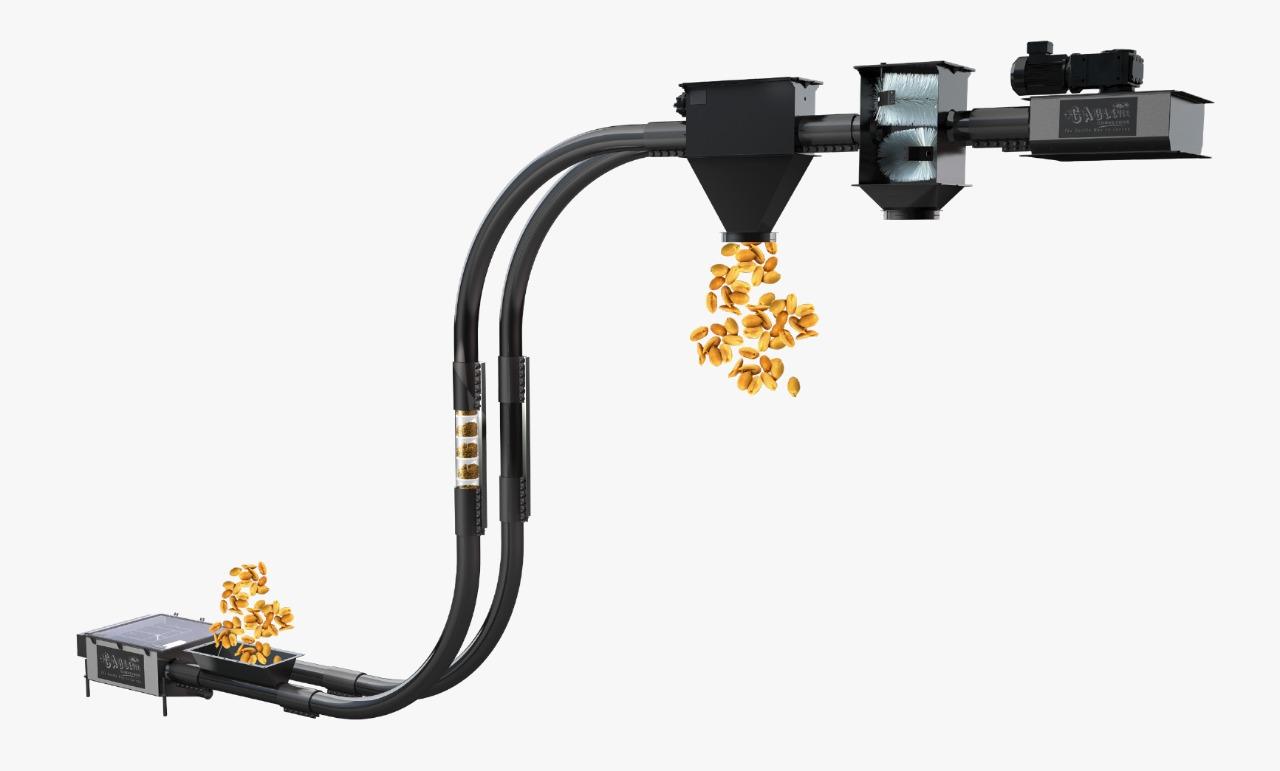 Conveying Systems
Conveying Systems
8+ MIN
15/09/2022
Industrial transport
Before beginning to describe the different types of transports, that exist nowadays in industries, with their advantages and disadvantages, it is important to understand the meaning of transportation: transportation is the means by which objects, products, materials, people or data, are moved from point A to point B. Transport is part of the logistics and material handling of a company, and is carried out in all activities of the value chain, but it does not add value, but rather the opposite: it has associated costs. For this reason, it is very important that the materials transportation is as efficient as possible, with the main objective of optimizing the product value chain. When talking about transport, it is necessary to consider different important points to determine which is the most appropriate system that adapts to the company situation and needs, for example: Product specifications Production line requirements Cleaning, safety and hygiene requirements Lay out and plant spaces Risk of dust explosion With product specifications we refer, first of all to which product is to be moved, the particle size, temperature, humidity and density, whether it is easy or difficult to flow and if it is or not abrasive. Other product characteristics are its angle of repose, rearrangement and inclination. Related to the second point, it is essential to define what is the required capacity, if the transport will be continuous, batch, intermittent and its hours of operation. Additionally, it is important consider the product care, either because it is fragile, has a high degree of explosiveness, it emits gases or because it can be corrosive. After this brief introduction, we will focus on some of the different types of transport that exist today, we will describe their main characteristics, advantages, disadvantages and applications, mainly in Pet Food, Aqua Feed and Animal Feed industry, considering the raw materials and the final product. Tubular Conveyors Tubular conveyors move the products by means of teflon disc that are joined by a taut cable that pulls the movement, the whole set is inside a continuous tube avoiding cross contamination. Main advantages are: it is an extremely clean equipment, easy to maintain, efficient (low energy consumption), it preserves the homogeneity of the product and there is a wide range of capacities and sizes, it is the ideal type of transport when it comes to delicate products that must maintain their structure protecting them, it is a safe system for food. We must highlight the great flexibility to the plant spaces that the tubular conveyor has, allowing to connect a load and a discharge in different industrial buildings, with angles and inclinations that other conveyors do not have the capacity to do. The disadvantages of tubular conveyors are: they are not suitable for abrasive products, their high cost and in special cases, when distances are long, is it necessary to install two or more equipment in series. As mentioned above, these systems have an excellent application for the finished product of Pet Food, Aqua Feed and Animal Feed industries, because it is transported in a delicate way, maintaining the structure of the pellet. It can also be used for the movement of raw materials, as long as they are not abrasive. With the installation of the tubular conveyor, the manufacturer ensures excellent performance and a high-quality final product. Z Conveyors The second equipment to be analyzed is the Z conveyor, it is named for its zeta shape, although also, depending on the layout of the plant, it can be designed in a C shape or with different inclinations for loading, lifting and unloading materials; these systems stand out for being systems with high transport capacities and that achieve very wide routes of long distances. The advantages of these systems are: equipment that adapt to the plant space with vertical and horizontal arrangements, low maintenance cost and avoid cross contamination of products. The disadvantages that these systems have are: the high investment cost, depending on the material of the buckets, the risk of wear when the product is abrasive and, in some cases, the high to medium levels of energy consumption. These equipment are mainly used to transport granular and solid materials, being suitable for the transfer of animal feed. Bucket Elevators Bucket elevators are very high-capacity conveyors, used today in the industry, mainly for lifting and transferring raw materials from one site to another. When it comes to finished product, these equipment are not recommended due to their high degree of breakage. The elevators have, as traction of movement, a band or a chain where the buckets are joined, there the material is loaded and transferred to the corresponding unloading point. Its two main advantages are: its large capacity and its relatively low investment cost (in relation to other conveyors analyzed in this article). As negative points, bucket elevators have: little flexibility, difficult maintenance and do not prevent cross contamination of products or materials. Pneumatic Conveying (dense phase) Another well-known and widely used transport is the dense phase pneumatic, where the force of the air acts for the movement (it is used for flowable products). The transport is divided into two types: Pressurized: used mainly to transport fragile or abrasive materials, at low speeds and long distances. The movement is generated from the 'push' of compressed air that forces the material to move to the destination point. Vacuum: in this second case the distances are short. A vacuum is generated by means of a pump and "sucks" the product to transfer it. The main advantages of these equipment are: tightness, so that no waste of the material or emissions are expelled into the environment, the handling of the product is soft and delicate, so the product is damaged very little and it´s flexibility to the layout of the plant. Among the disadvantages of pneumatic transport, we find that not all products can be transported, there are limitations with the size of the particles, the maximum transport capacity and in some cases the distances, finally, the energy consumption is not less and the wear suffered mainly by the curves of the system. For the transport of raw materials, it is not profitable due to the cost of the equipment, while for the final product it is usually used by companies, despite the small damage that the croquettes suffer. Pneumatic Conveying (diluted phase) Continuing with pneumatic transports, we have the diluted phase transport. It is a more direct method and the materials move dissolved along with the air flow. Like the previous case, these systems are also divided in two types: Pressurized: a high volume of compressed air is supplied at low pressure to generate the movement of the products. It is commonly used to get the product from a one point to multiple destinations. Vacuum: it works in the opposite way; with a pump the vacuum is generated to carry out the product. A great advantage that the transport has is that important distances are achieved with wide flexibility, high transport capacity and its investment cost is accessible, while its negative aspects are its large consumption of electricity and there is a risk of cross contamination of products or raw materials. They are used for bulk raw materials where the breakage is not relevant. This break occurs because the materials are suspended in the air and in contact with the pipe, generating friction that affects its homogeneity. Therefore, when we refer to the transport of animal feed kibbles, it is not a recommended system. Screw Transport The next transport to analyze is the screw transport, it is one of the simplest that exist today in industries due to its easy manufacturing process and its accessible price. The screws are fed through one or more mouths and the material is moved to the discharge (s) by means of the screw. The screws are very useful for the discharge of silos in the dosage on scales, where the variable flight is usually used to avoid the compaction of the product. However, when we talk about the transport of animal feed kibbles, the screws are not recommended because it can damage them, generating breakage of kibbles and dust, for this reason the screws are not recommended for the final product. However, they are considered for the move of raw materials, although the short distance from one point to another is considered as a limitation. The advantages that can be mentioned of these systems are: their low investment cost and simple installation. While the disadvantages that stand out is its null flexibility for being a robust system, as mentioned above the high probability of breaking the transported material, in many cases its difficult maintenance and its low capacity. Belt Conveyors Belts Conveyor are the most common types, as is screw transport. The movement occurs on the belt, which moves thanks to the rotation of the rollers where it rests. Although the operation seems to be simple, today there are great innovative technological developments. The positive aspects of these equipment are: versatility and adaptability to a wide range of products with great transport capacity, according to the technological level it is considered as a low-cost equipment, significant distances traveled are achieved and it has a low consumption of electrical energy. Furthermore, by including "floating" sections on load cells and belt speed control, it is possible to measure and gravimetrically control the flow of product to be transported. As all the equipment mentioned above, this one also has disadvantages, for example damage to the rollers and belt, possible slippage, misalignment and it is not a very flexible system. Currently several industries use these systems for transportation, however, it is necessary to consider when raw materials are transported because the air can be polluted and when finished products are transported there can be cross contamination. Chain Conveyors Another interesting transport to consider when planning an investment project is the 'redler' or chain conveyor, the traction is from the chain that moves the modules for the move of materials. The most notable advantage is its high transport capacity and the distances that can be achieved. While among its disadvantages are the frequent replacement of the sprockets due to their high wear, their high energy consumption, their almost zero flexibility and only slight inclinations can be applied. Its use for the transfer of animal feed pellets is questioned because product can accumulate between the chains, which would generate a source of bacteriological formation, in addition to the high probability of breakage of the pellets. Not everything is negative in these transports, because when raw materials must be moved, it is one of the most recommended and used systems for industries having an accessible price. We will make a conclusion with ponderation of each of the analyzed transports considering the points seen and the following assessment: We can conclude that, after analyzing each of the main aspects and characteristics of the different conveyors with their advantages, disadvantages and applications in the animal feed industry, among the most suitable and recommended systems are the Tubular and Z Conveyors. Despite the differences, they all have a good score, so it is key to understand the purpose of their installation, each of the points studied must be considered, its necessary to evaluate the cost / benefit ratio and determine which system is indicated for the existing necessity. At Clivio Solutions we are at your entire disposal to evaluate and recommend the appropriate type of transport for each of your needs, it will be a pleasure to help you. We await your inquiries by email or by WhatsApp at +54 -9-2352-540040. Source: Clivio Solutions
 Trends
Trends
4+ MIN
30/09/2020
Control of Industrial Odor Emission in Pet Food plants
AEROX supplies long-term total odor control solutions for Industries around the world. We help our clients reduce their emissions to comply with industrial and government laws.
The Aerox®-Injector eliminates odors produced in industrial processes and is recognized by governments and companies in the sector as 'Best Available Technology'.
A reduction of malodors of up to 95% and a unique technique for eliminating odors from humid air processes, have been an easy choice for multiple world market leaders.
A DEDICATED ENVIRONMENTAL APPROACH
Since odor is more of a nuisance than a political issue or an environmental problem, it is high on the priorities of companies in all sectors. Corporate image and social responsibility are essential to the status and success of companies today, managers are willing to invest in technologies to combat such nuisances.
The Aerox®-Injector is specifically designed with the environment in mind. The injector does not require water, chemicals or fuel to operate.
Thanks to its unique active oxygen technology, which is based on the principle of passing air between specially prepared cathodes and anodes, all it requires is a relatively small amount of electricity. In addition, the Aerox Service program guarantees that all consumables are completely recycled: respectful with the environment.
FROM ELECTRICITY TO CLEAN AIR
- Without fuel
- Without gas
- Without water
- No chemicals
- Without residues
LEADER IN CONTROL OF ODORS
The main objective of our efforts is to eliminate bad odors resulting from your production processes at ground level. The basis of our technology is the Aerox®-Injector, a small unit attached to the outside of the process gas outlet duct that injects 'active oxygen' into it. It oxidizes smelly molecules, making them imperceptible to the human nose.
Thus, through the Aerox®-Injector, your neighbors will enjoy something unquestionable: CLEAN AIR. Aerox has the experience and knowledge of the sources and compositions of bad odors from many Industries as well as the knowledge of their respective production processes. This allows a careful determination of the complexity of each specific situation and the best possible solution. Aerox will reduce your plant's odor emissions to acceptable levels and often even eliminate them simultaneously.
THE AEROX®-INJECTOR, NON-THERMAL PLASMA TECHNOLOGY
The Aerox®-Injector is a non-thermal plasma unit located outside the process gas line. Clean ambient air is used to generate the oxygen radicals, which are injected into the exhaust air flow, oxidizing the odor molecules present and thus rendering them harmless.
ADVANTAGES AT A GLANCE
- Extremely effective odor control
- Injection allows treating large volumes of process air
- Low cost of ownership
- No need for water, gas, or chemicals. Without residues.
- Best Available Technology (B.A.T.)
CONTROL OF BAD ODORS IN VARIOUS INDUSTRIES
Aerox, inventor of non-thermal plasma injection malodor control technology, has 25 years of proven experience in malodor control in multiple industry sectors. The list of specific industries continues to grow.
Truly durable odor control solutions require advanced, custom-made technology. The best way to control bad odors is to study each specific case. Obviously, the starting point of any solution that Aerox supplies is the origin of the production process and the resulting bad odors.
Other factors such as the climate, the geographic situation and government legislation are studied in situ in each specific case.
Furthermore, each Aerox®-Injector unit is adjusted during commissioning by a suitably qualified Aerox engineer.
World market leaders choose Aerox
Aerox B.V. is the world leader in odor control through efficient and environmentally friendly non-thermal plasma injection technology. We have deep knowledge and experience in all aspects of odor control processes, in various industries.
The Aerox process begins by gathering information and providing advice on the feasibility of contracting Aerox in your specific case. Our advice is based on the information you provide us by telephone or by questionnaire, as well as the details of your industrial process, air volumes, geographical location and weather conditions.
Bad odor problems are complex and unique. Aerox, therefore, offers factory on-site testing allowing its customers to determine what Aerox performance and in what capacity. Based on the results obtained from the test, Aerox designs and offers optimal odor control solutions. An experienced and appropriately qualified team of Aerox project engineers will cooperate with customer engineers to ensure an optimal implementation process, tailor-made for the conditions and
plant requirements. After commissioning Aerox will focus on long-term cooperation to provide maintenance services such as module replacement and remote control. This allows to reduce maintenance costs and the proper functioning of the Aerox®-Injector.
MORE INFORMATION
If you want to know more about how it works, you can watch video in English.
If you want more information about the Aerox®-Injector, its possibilities, receive a proposal for your plant or know more about the control of industrial odors in general, please send an e-mail to [email protected] or call directly at +54 9 236 4418899.
Source: Clivio Solutions
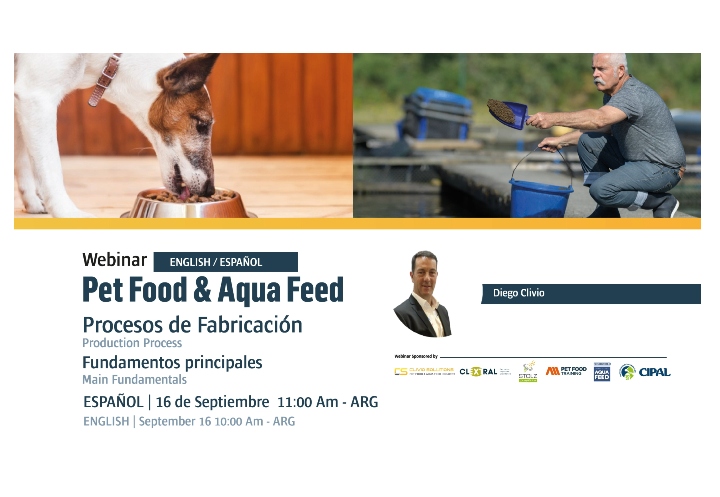 Events
Events
1+ MIN
29/09/2020
Do you want to see the complete Video of the Pet Food & Aqua Feed Production Process Webinar?
Promotional short video: Request the Complete Video by email to:[email protected] Statistics of registered last 16-Sept-2020:
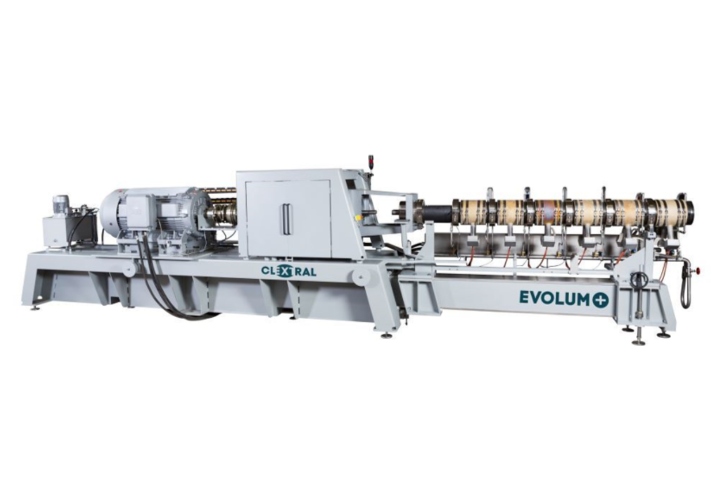 Extrusion
Extrusion
4+ MIN
03/06/2020
Extrusion Systems for Pet Food and Aqua Feed. Single or Twin Screw?
Introduction The Extrusion process is a thermo-mechanical process that consists of forcing a product to pass through one or more holes of a specific size under pressure and temperature thanks to the Archimedes screw concept (also known as "endless screw"). The extrusion processes in the processing of extruded pet food and aquaculture, aim to achieve the cooking of the mixture of raw materials and ingredients giving it the form of croquette (pellet / kibble) that facilitates its subsequent handling. The most important things that take place inside the extruders are the gelatinization of starches and texturization of proteins, both processes help to the greater digestibility, as well as to form a structure and texture that hosts other ingredients, minerals, fats in a stable and uniform way. For a good gelatinization of starches and texturization of proteins moisture is needed (the one that is added in the form of liquid water and steam in pre conditioning and / or extruder), temperature is needed, part of the temperature input is given by the addition of steam, but the most important is carried out by the mechanical and friction work produced by the screws. And mechanical energy is also needed, granted by the shearing action of the screws. Today there are two technologies available for extrusion, these are single screw (SSE) and twin screw (TSE). In this article we will talk about the features, advantages and disadvantages of each of these technologies. Single Screw Extruders In Single Screw Extruders we observe as a characteristic that the advance of the screw moves the materials through the channel by developing a 'drag flow', whose speed is directly proportional to the speed of the screw. Due to the constraint of the die in the discharge of the extruder, there is a "backpressure flow', which goes in the opposite direction to the drag flow. Therefore, the 'flowrate" in single screw extruders (SSE) is equivalent to the drag flow rate – backpressure flow rate. The flow dynamics in the screw channel shows us that the fluid particles travel at different speeds and that they do not interact in their entirety, resulting in a dispersion of dwell times and an uneven mixture. Consequently, the heat transfer as well as the entry of mechanical energy in the cooking section are very limited. In addition, the length of the shear depends on the space, which generates heterogeneities of the melting properties (cooking duration, temperature and pressure). In short, Simple Screw Technology (SSE) features: A single process section. Dependence on performance and screw speed. A single operating point (performance combined with maximum screw speed and die opening area). Limitations in mixing, which limits heat transfer, mechanical energy input, and generates heterogeneities in particle fusion (cooking duration, composition, temperature and pressure). The higher the screw wear, the lower the extruder performance. A reduction of 10-20% can be observed during the life of the screw. 'Lubrication factors' in the composition of the mixture generate runoff, which reduces the performance of the extruder and the addition of mechanical energy. Twin Screw Extruders Twin Screw Extruders (TSE) have multiple process sections in series, (melting/cooking, vapor/gas extraction, vapors/positive displacement pumping), thanks to the different restrictions generated by the work of the screws. The process sections show high levels of mixing, good heat transfer and important shear work (addition of mechanical energy). In the TSE, a very intense mixture is observed in the coupling area of the screws (macro mixing and micro mixing). Consequently, the heat transfer coefficient in the sections is very high. Homogeneous fusions can be obtained, with a very good link of lipids. The expansion after traversing the die develops consistently, leading to an excellent density, texture and shape of the product, as well as a uniform final density and color. In short, Twin Screw Technology (TSE) features: Multiple process sections in series. The performance and speed of the screw are unlinked. Therefore, for a mixture formulated, the TSE are characterized by its many operating points. In addition, the screw profile can vary extensively to modulate the addition of mechanical energy. The mixing process is very intense, which gives great benefits in relation to the quality of the product. The slippage of the mixture is compensated by the positive displacement pumping of the screws. Less sensitivity to changes in raw materials. Increased tolerance to changes in moisture, fiber aggregates and fats. Better quality and consistency of final product. Greater overall process flexibility. In Aqua Feed, the best possible uniformity and high level of degassing decreases the chances of pellets floating when Sinking Aqua Feed is produced. In Aqua Feed it allows us to produce, thanks to the action of the two screws, micro pellets up to 500 microns (0.5 mm). In the particular case of the Twin Screw Extruders of the French Company "Clextral" (top image of Clextral extruder), the proven advantage of being able to achieve the high quality of food by working with 2 to 3 % less humidity is achieved, implying significant energy savings in the subsequent drying process. Conclusion Both extrusion technologies are widely used in the pet food and aqua feed production sector. Single Screw technology typically requires a lower investment cost, and somehow lower spare parts costs. While the Twin Screws requires a higher investment that brings as advantages the possibility of working with a wider range of raw materials, with more fibers, more vegetal proteins and higher fat content. Author: Eng. Diego Clivio More info: www.cliviosolutions.com
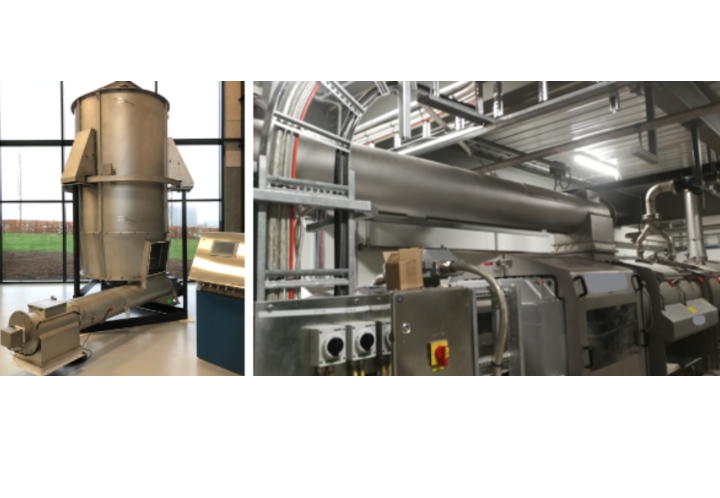 Extrusion
Extrusion
1+ MIN
21/05/2020
Exact control of the product flow entering the extruder
We would like to make a presentation of the LIW "Loss In Weight" equipment of the prestigious JESMA Company for measuring the flow of product entering the conditioner / extruder.
As you know, the good operation of this equipment ensures a gradual and exact feeding of the material that enters the conditioner and thus the extruder.
If this equipment does not operate properly, the quality of the final product can be very compromised since density variations and fluctuations in this area are very frequent.
Variations in the feeding and erroneous readings of the product flow that enters causes erroneous additions of steam and water producing variations in the working conditions of the extruder (SME - Specific Mechanical Energy).
An accurate and reliable product flow measurement system that reaches the conditioner will allow an addition of water and steam in the appropriate proportions and therefore a continuous process of higher quality, without depending so much on the intuitive adjustments of the operators.
Enclosed the updated presentation of this type of equipment, including models, capacities and prices.
We are available to tell you more about these teams.
See presentation
Source: www.cliviosolutions.com




